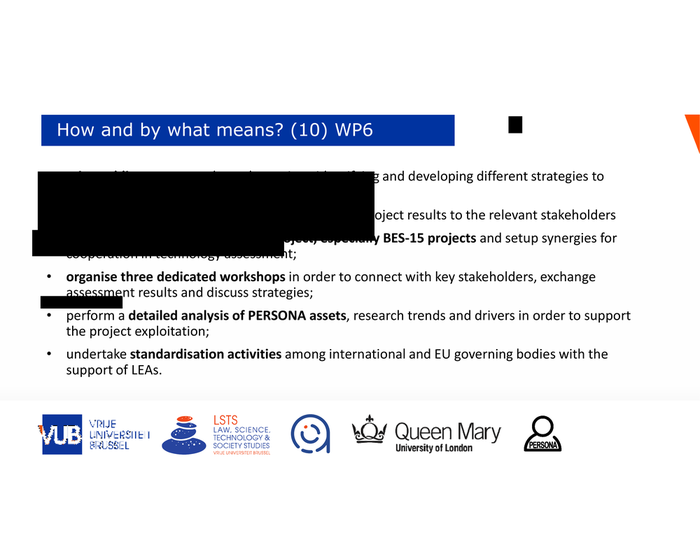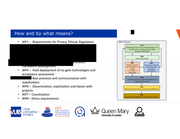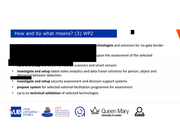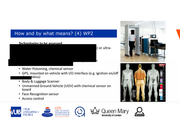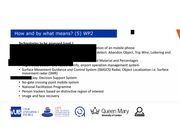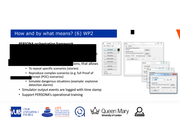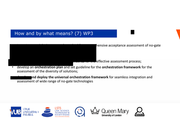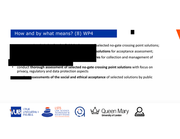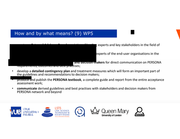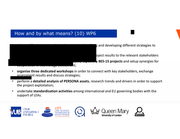persona
How and by what means? • WP1 – Requirements for Privacy, Ethical, Regulatory and Social No-gate crossing point technology Acceptance (PERSONA) • WP2 – Analysis, selection and preparation of no-gate technologies for assessment • WP3 – Assessment method and orchestration framework development • WP4 – Field deployment of no-gate technologies and acceptance assessment • WP5 – Best practices and communication with stakeholders • WP6 – Dissemination, exploitation and liaison with projects • WP7 – Coordination • WP8 – Ethics requirements
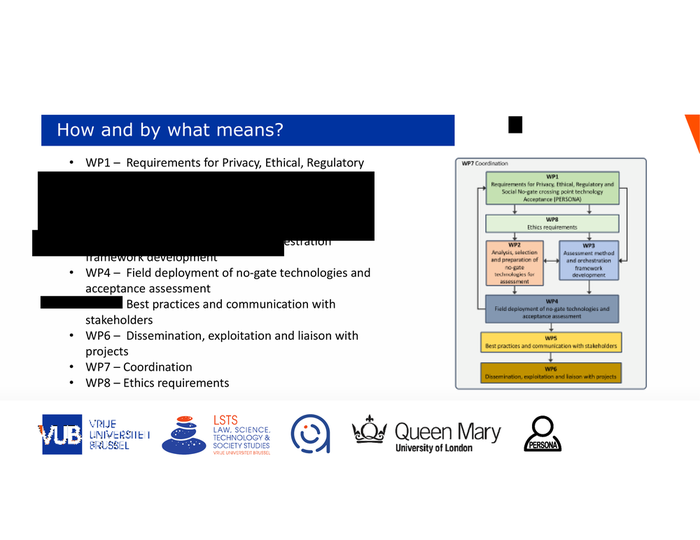
How and by what means? (2) WP1 • study and analyse existing European regulations and best practises regarding the acceptance of border security solutions; • specify the user requirements and define use cases and user scenarios for the deployment and assessment executed in WP4; • define technical requirements for no-gate border security solutions selected for impact assessment; • identify PERSONA requirements based on user and technical requirements and latest EU regulations; • study and identify potential risks and mitigation controls; • to perform thorough analysis of impacts against defined requirements in order to identify elements which require further treatment and mitigation;
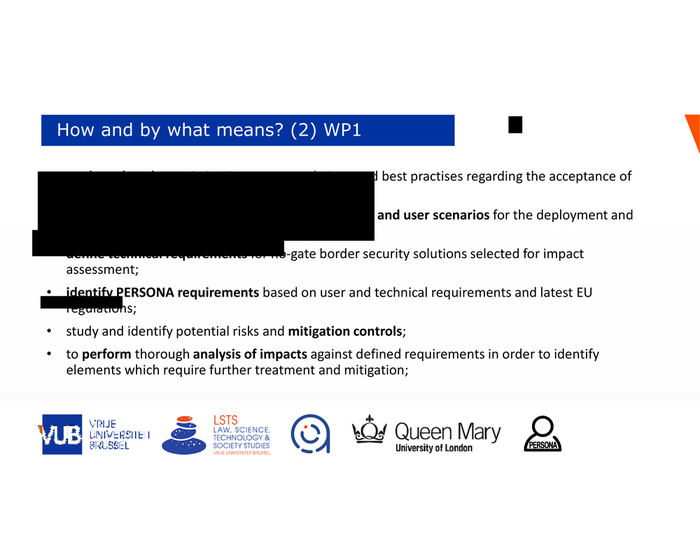
How and by what means? (3) WP2 • analyse and select the latest and next generation technologies and solutions for no-gate border crossing points • ensure the minimum Technology Readiness Level 5 upon the assessment of the selected methods • tune and setup the latest verification scanners and smart sensors • investigate and setup latest video analytics and data fusion solutions for person, object and abnormal behavior detection • investigate and setup security assessment and decision support systems • prepare system for selected national facilitation programme for assessment • carry on technical validation of selected technologies
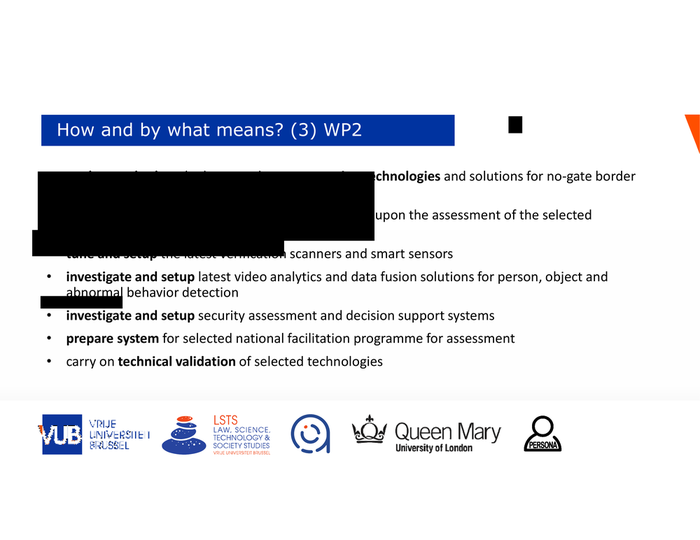
How and by what means? (4) WP2 Technologies to be assessed • Motion detection, based on Passive InfraRed (PIR) or ultra- sonic • Chemical and weather sensor • Inertial sensor, sensor based on gyroscope and/or accelerometer • Water Poisoning, chemical sensor • GPS, mounted on vehicle with I/O interface (e.g. ignition on/off door status) • Body & Luggage Scanner • Unmanned Ground Vehicle (UGV) with chemical sensor on board • Face Recognition sensor • Access control
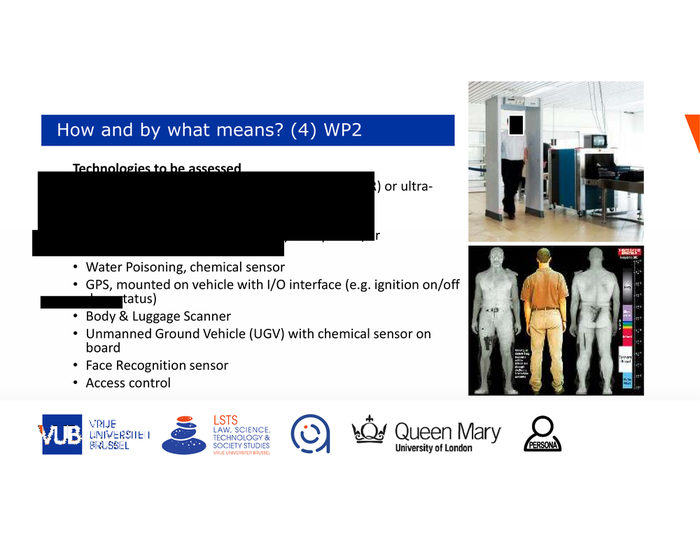
How and by what means? (5) WP2 Technologies to be assessed (cont.) • IMSI Catcher, detect IMSI, IMEI and other information of an mobile-phone • Video Management System, system Camera that detect: Abandon Object, Trip Wire, Loitering and LPR • Vehicle & Cargo Scanning, Objects and Counts and Material and Percentages • Flight data, Season and Resource info, airport operation management system • Surface Movement Guidance and Control System (SMGCS) Radar, Object Localization i.e. Surface movement radar (SMR) • DecidEasy: Decision Support System • No-gate crossing point mobile system • National Facilitation Programme • Person trackers based on distinctive region of interest • Image and face recovery
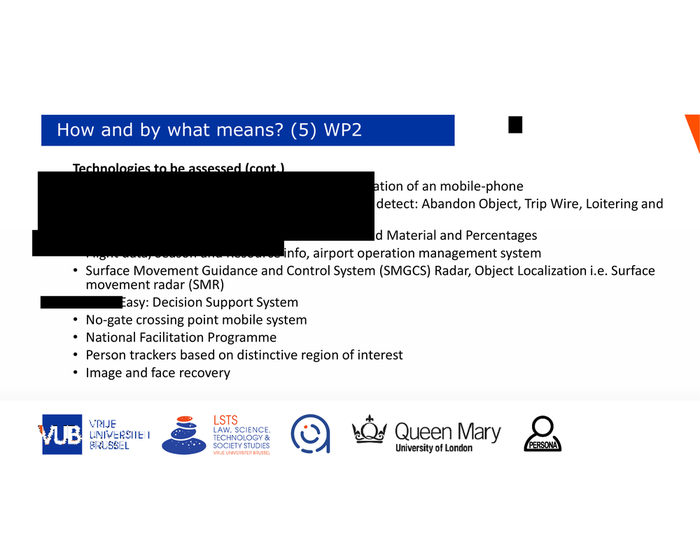
How and by what means? (6) WP2 PERSONA orchestration framework • Emulate security sensors • Input files, for definition of events in specific time • Several sensor simulators can run at same time • Tool to test the PERSONA applications, that allows • To repeat specific scenarios (stories) • Reproduce complex scenarios (e.g. full Proof of Concept (POC) scenarios) • Simulate dangerous situations (example: explosive detection alarms) • Simulator output events are logged with time stamp • Support PERSONA’s operational training
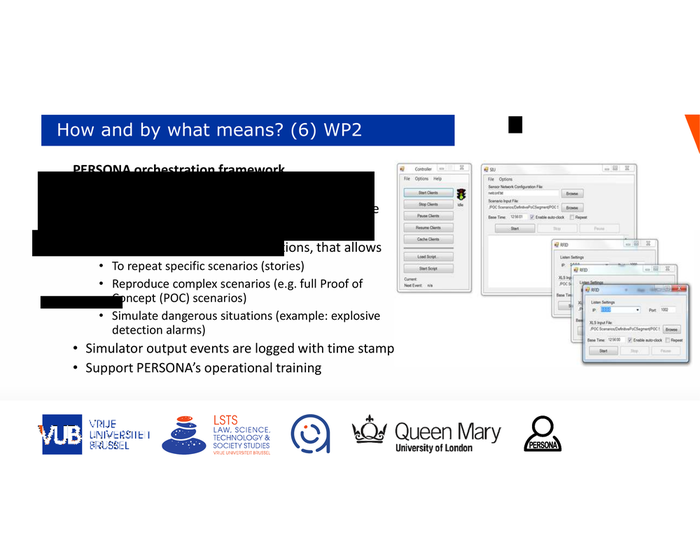
How and by what means? (7) WP3 • investigate and design research method for comprehensive acceptance assessment of no-gate border security solutions; • define clear criteria for user perception analysis; • develop a set of questionnaires and metrics for the effective assessment process; • develop an orchestration plan and set guideline for the orchestration framework for the assessment of the diversity of solutions; • develop and deploy the universal orchestration framework for seamless integration and assessment of wide range of no-gate technologies
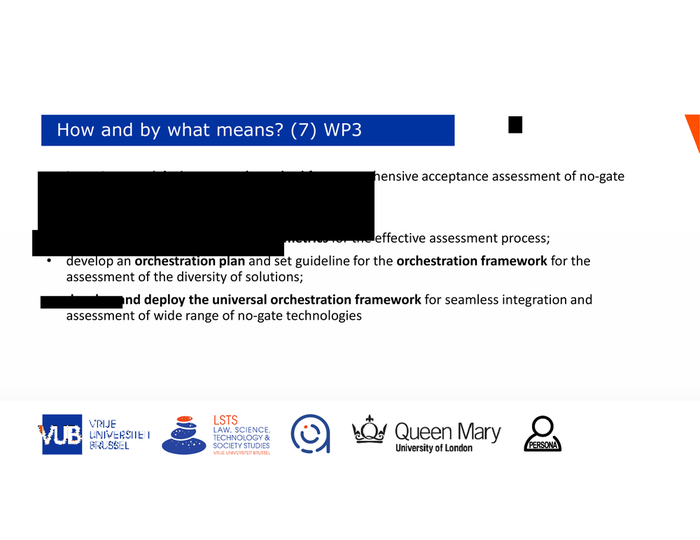
How and by what means? (8) WP4 • prepare a detailed plan for the field deployment of selected no-gate crossing point solutions; • successfully deploy selected no-gate crossing point solutions for acceptance assessment; • define and implement clear protocols and procedures for collection and management of research data • conduct thorough assessment of selected no-gate crossing point solutions with focus on privacy, regulatory and data protection aspects • conduct assessments of the social and ethical acceptance of selected solutions by public
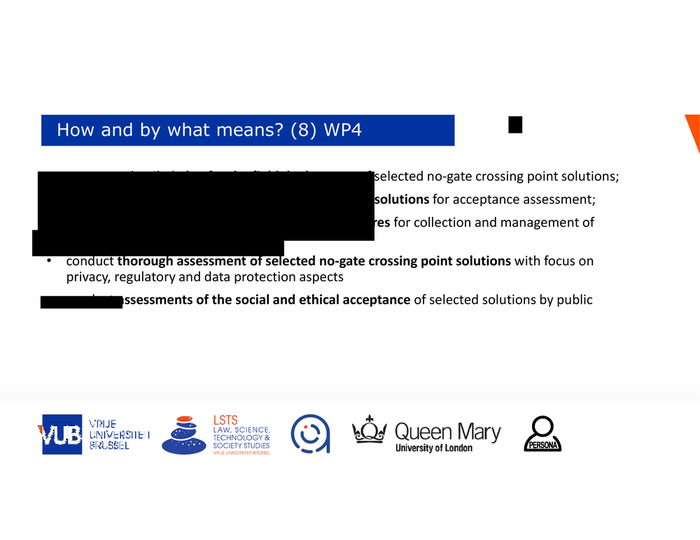
How and by what means? (9) WP5 • create an External Advisory Board consisting of leading experts and key stakeholders in the field of border security; • create a Security Advisory Board consisting of leading experts of the end-user organisations in the field of border security; • create a large network of stakeholders and decision-makers for direct communication on PERSONA requirements, outcomes and best practises; • develop a detailed contingency plan and treatment measures which will form an important part of the guidelines and recommendations to decision makers; • produce and publish the PERSONA textbook, a complete guide and report from the entire acceptance assessment work; • communicate derived guidelines and best practises with stakeholders and decision makers from PERSONA network and beyond
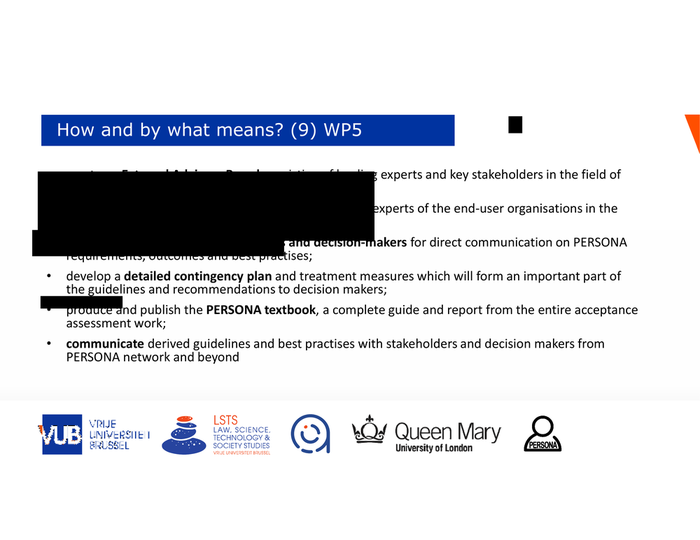
How and by what means? (10) WP6 • raise public awareness about the project, identifying and developing different strategies to maximise the project visibility among stakeholders; • undertake actions for broad dissemination of the project results to the relevant stakeholders • establish close links with relevant project, especially BES-15 projects and setup synergies for cooperation in technology assessment; • organise three dedicated workshops in order to connect with key stakeholders, exchange assessment results and discuss strategies; • perform a detailed analysis of PERSONA assets, research trends and drivers in order to support the project exploitation; • undertake standardisation activities among international and EU governing bodies with the support of LEAs.
